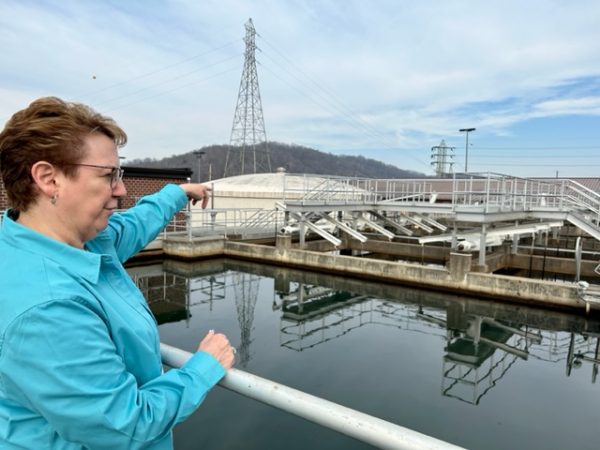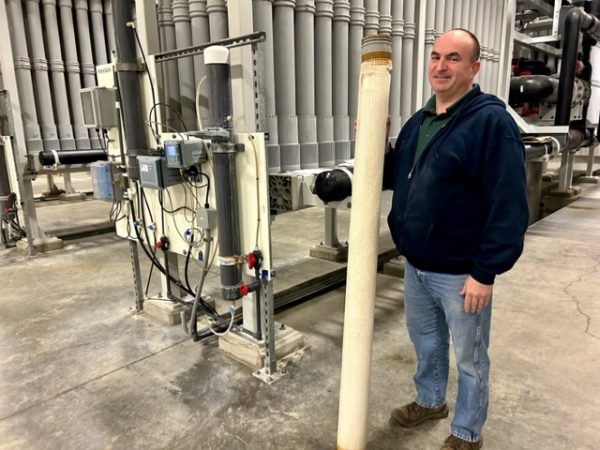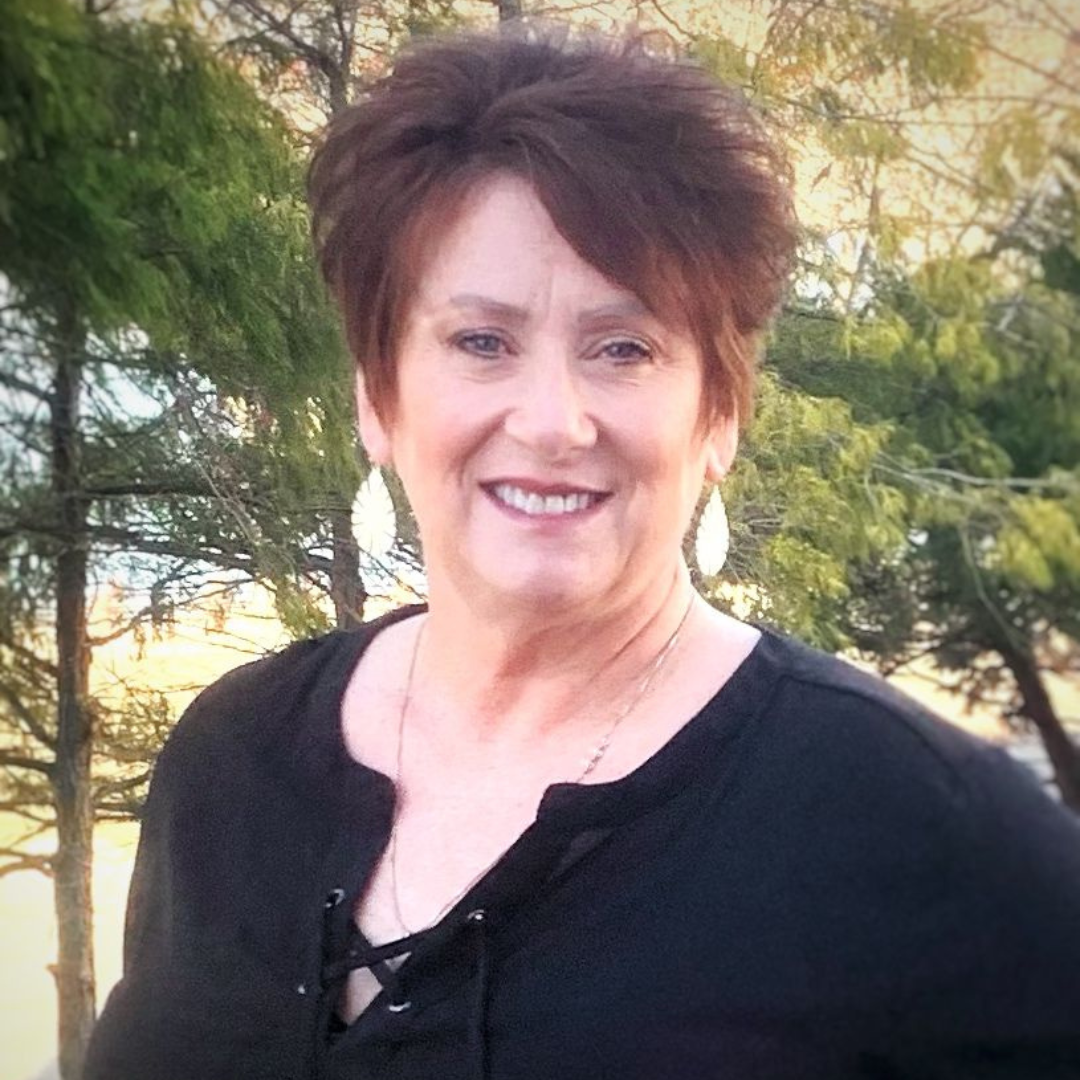We never give much thought to our water supply; we crank the faucet on and assume the water that streams forth is clean and safe. But after a disaster like the February 3 train derailment and subsequent contamination about 55 miles north of us in East Palestine, Ohio, many locals are rightfully concerned about the current quality of our water. Is that concern warranted? Weelunk went directly to the source to find out.
I spoke with water department superintendent Lori Siburt and plant manager Michael Rice, who gave me a full tour of the plant located at 1551 Richland Avenue in Warwood. Both were proud of the modern plant’s workings, which were undoubtedly more advanced and impressive than I had anticipated.

After the incident in East Palestine, Siburt says many citizens have reached out to her to express concern. ”People have come up to me to say that they aren’t going to drink our water,” Siburt shared. “I tell them that’s their choice, but I drink it. Wheeling has awesome water quality.” Siburt clearly has no reservations about the safety of Wheeling’s water following the recent incident in East Palestine, and after touring this state-of-the-art facility and hearing about the safeguards in place, neither do I.
ORSANCO – The Ohio River Watchdog
Siburt and Rice said that the Ohio River Valley Water Sanitation Commission, or ORSANCO, is a watchdog organization that keeps tabs on water quality in the Ohio River. According to their website, ORSANCO and its member states have worked together since 1948 to ensure that the river water is safe for drinking, for recreational and industrial purposes, and for supporting a diverse and healthy aquatic community. ORSANCO also coordinates the flow of communication between states and water agencies all along the river. This flow of information is vital to public safety efforts, as the website also states that around 5 million people depend on the 981-mile-long Ohio River for their drinking water.
Rice said that once the Weirton plant’s lab saw a spike of the chemical butyl acrylate in their water intake following the East Palestine contamination, they reported their levels to ORSANCO, who then shared that information with plants downstream. This enabled the Wheeling plant to estimate the approximate time the contaminated water would reach its intake system and take appropriate action.
From Shore to Spigot: A Day in the Life of Our Drinking Water
In order to understand the safety of Wheeling’s water, one must first understand the long and complicated process of making river water drinkable. It’s also good to know that the water treatment plant’s laboratory rivals that of any hospital and most of the day-to-day testing remains the same regardless of whether or not the river has been contaminated by some recent disaster.
The water is pulled in from the river’s shoreline where it begins its trek to our spigots by spending 8 hours in a settling tank system where the dirt and sediment are removed. The water then moves through the purification process where it is sent through a series of micro-porous hollow fiber microfiltration filters. Each filter is comprised of thousands of spaghetti-like strands that repel bacteria and filter out anything larger than 0.04 microns in size. To put this in perspective, the influenza virus is 0.2 microns and the legionella bacteria is 0.6 microns in size. Therefore, these and other common bacteria are easily filtered out of our drinking water. The Wheeling plant was the first along the Ohio River to implement this advanced filtration system and has been using it for several years now. After filtration, additives such as chlorine and fluoride are added to the water. Ph level is also monitored and adjusted as needed to maintain a neutral level around 7.
Rice and Siburt explained that water samples are tested numerous times every day. Operators check for “spikes” on their computerized results screens that indicate higher than normal concentrations of possible contaminants. The system recognizes about 30 “typical” substances commonly found in the water. It also identifies thousands of less-routine chemicals that might appear in the water, such as butyl acrylate, which was found in the water following the East Palestine incident.
On February 8, butyl acrylate was found in the river water here in Wheeling. The health advisory issued by the Agency for Toxic Substances and Disease Registry, a branch of the Centers for Disease Control, indicated that 560 parts per billion (PPB) would be a dangerous level of this chemical. The lab result in Wheeling on February 8 showed 4 PPM, which was much, much lower than the red-flag level. Rice showed me the computer image of the February 8 “spikes” and the one for butyl acrylate was minuscule compared to those of the “typical” substances in that sample. In addition, no other chemicals from the train derailment have been detected as of this writing.
Siburt stated that we are more fortunate than some areas when the unexpected happens, as the watershed area for the Ohio River is quite expansive, covering roughly 27,000 square miles. The fact that the river is fed by so many tributaries increases the dilution factor, which lessens the likelihood of dangerous levels of contamination.

Once that tiny amount of butyl acrylate was detected in the river water last month, the Wheeling water treatment plant shut down the river intake for 24 hours to allow the contaminated water to bypass our city. “We are fortunate here to have options,” Siburt said. She explained that Wheeling has 7 wells and 19 tanks/reservoirs that hold enough clean water for our intake to be shut down for several days if necessary. In the case of a longer shutdown, Siburt said the city would ask residents to conserve water in order to stretch the clean supply for as long as possible.
The following day, on February 9, river samples showed non-detectable amounts of butyl acrylate. The river intake was reopened and Wheeling’s water treatment process was back to business as usual. The bottom line? No chemicals whatsoever made it from the river into our drinking water.
Additional Safeguards
Rice also noted that for the time being, ORSANCO has requested that operators physically go to the river bank to take a daily surface sample as an additional quality check following the recent contamination. He said such samples would catch any chemicals that might float on the surface of the river and therefore not be pulled into the intake valve which is deeper under water. So far no additional chemicals have been found on the water’s surface. “And we’ve also experienced absolutely no fish kill,” Rice said.

When necessary, Siburt said that powdered activated carbon is also added to the water in some cases of contamination. She explained that chemicals bind to the carbon and are then filtered out by the microfiltration system. Carbon was added in February in the days following the butyl acrylate spike as an additional precautionary measure.
Source Water Protection Plan
Public water departments are required by law to complete a source water protection plan, outlining the steps being taken to protect the drinking water supply. The plan identifies threats to the water supply and establishes strategies to minimize those threats. It also sets forth emergency response procedures to incidents that compromise the water source. In addition, it serves as a sort of “Yellow Pages” of all water agencies along the Ohio River, so that in case of emergency, contact information for all affected stakeholders is readily available. This allows for quick response to threats and the ability to immediately begin coordination of a response plan across multiple agencies.
The City of Wheeling’s source water protection plan is available to the public and can be viewed by visiting the treatment plant. “We always want to be transparent about our water quality,” said Siburt. She warns against getting information about water safety from social media and other unauthorized sources.
Wheeling is very fortunate to have the mighty Ohio River flowing along its western boundary, supplying us with this vital natural resource. Siburt noted that many other areas are not as lucky. “For example, there is concern about the Great Salt Lake running dry,” she shared. “And other western states are often under water conservation orders.” We can be thankful that our water source is self-renewing. We can also be thankful for an ultra-modern treatment facility that operates around the clock to keep our water safe. I asked Rice and Siburt if working in the aftermath of the situation in East Palestine was stressful for plant workers. They both said no more so than normal. And that’s because their team is passionate about water quality and safety every day.
• Ellen Brafford McCroskey is a lifelong resident of Wheeling and a proud graduate of Wheeling Park High School, where she discovered her love of writing as a member of the yearbook staff. She earned her bachelor’s degree in Human Resources Management at the former Wheeling Jesuit College. By day, she utilizes that degree at the international law firm where she is employed. After work, you can find her relaxing with family, friends, and her clowder of cats.







